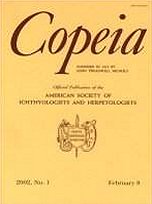A chytrid fungus, Batrachochytrium dendrobatidis, was found in salamanders, Ambystoma tigrinum stebbinsi, collected in southern Arizona, USA. The chytrid was isolated and cultured, and Koch's postulates were satisfied by infection of metamorphosed salamanders with pure culture and subsequent reisolation from these salamanders. We used the salamander strain and a strain isolated from lowland leopard frogs in Arizona, Rana yavapaiensis, to infect metamorphosed A. tigrinum, R. yavapaiensis, and R. boylii. All three species became infected, but none of the infected salamanders died within 60 days, and mortality of infected frogs did not differ significantly from controls, although sample size was small. Chytrid infection could not be detected by light histology in most of the infected frogs and one of the infected salamanders 60 days after infection. To date, there are three records of chytridiomycosis in salamanders on websites; ours is the first complete report of occurrence and pathology of chytridiomycosis in field-collected North American salamanders. Our results also demonstrate that chytridiomycosis does not always lead to mortality. Individuals within a species vary in susceptibility to infection, animals appear to recover from the infection, and syntopic salamanders and frogs may act as reciprocal pathogen reservoirs for chytrid infections.
How to translate text using browser tools
1 September 2003
Pathogenicity and Transmission of Chytridiomycosis in Tiger Salamanders (Ambystoma tigrinum)
Elizabeth W. Davidson,
Matthew Parris,
James P. Collins,
Joyce E. Longcore,
Allan P. Pessier,
Jesse Brunner
ACCESS THE FULL ARTICLE

Copeia
Vol. 2003 • No. 3
September 2003
Vol. 2003 • No. 3
September 2003




